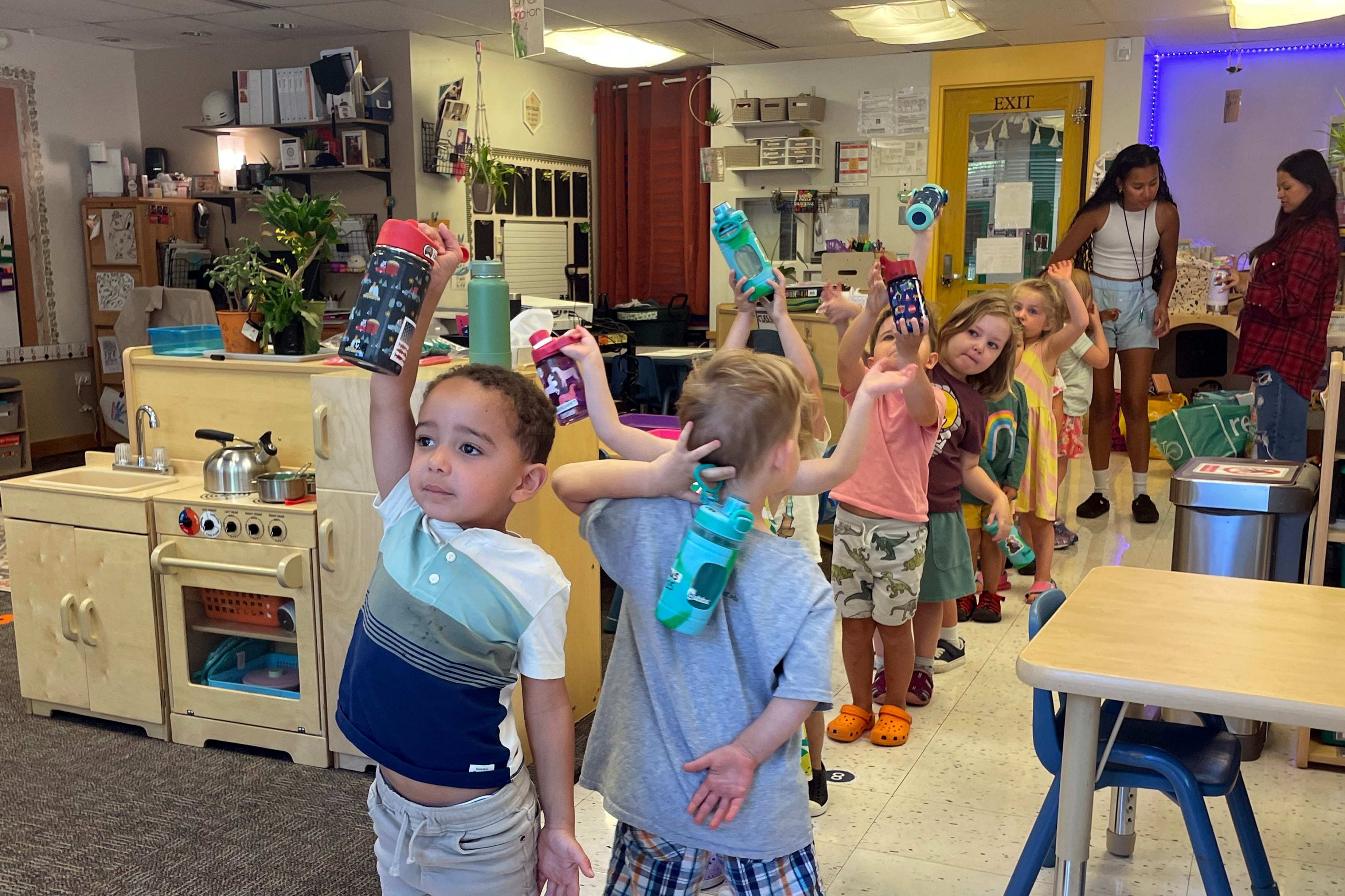When families send their young children to child care or preschool, they want them to be safe, happy, and engaged. So how can they figure out if a program is offering high-quality care?
Colorado’s child care rating system is one tool that can help. The ratings are straightforward and can be accessed through a quick online search. Keep in mind they won’t reveal everything parents need to know about a program — asking questions and visiting the site are important too — but they’re a good starting place.
Here’s a closer look at how Colorado’s child care rating system works:
How does Colorado rate child care quality?
Colorado launched a five-level quality rating system called Colorado Shines in 2015. Nearly all licensed child care and preschool providers who serve children from birth to 5 years old have one of the ratings, which are good for three years.
The lowest rating is Level 1, which indicates that a provider is licensed by the state and meets basic health and safety standards. The highest rating is Level 5, which means the provider has gone through an intensive process to demonstrate high quality in all aspects of their program — from their curriculum and business practices to teacher training and even efforts to use books and materials in a child’s home language.
Programs with Level 3 and Level 4 ratings are also considered high quality, but earned fewer points in some categories than their Level 5 counterparts.
How can I look up my child’s preschool or child care rating?
Anyone can look up child care and preschool ratings on the Colorado Shines website. You can search for a specific child care provider or for all providers in a specific geographic area. In addition to the rating, the listings include hours, contact information, and other details about providers.
You can access a Spanish version of the website by clicking on the “Spanish” link in the top right hand corner of the page. Within the next year, the state will upgrade the website to offer additional languages.
Parents can also call the state’s 211 hotline for help finding child care or determining a provider’s Colorado Shines rating. Finally, they can ask providers directly what Colorado Shines rating they have.
Does every child care provider get a rating?
The vast majority of state-licensed programs that serve young children have a Colorado Shines rating. These include child care centers, private preschools, preschools run by school districts, and home-based child care programs. Exceptions include mobile preschools, which offer classes in retrofitted buses or vans, and forest preschools, which offer programming in outdoor locations.
Unlicensed child care providers also do not receive Colorado Shines ratings. This group includes nannies, babysitters, and people who care for a small number of children who are neighbors or relatives in a home setting.
Can a child care provider with a high rating still have been subject to state investigations or penalties?
Yes. A high Colorado Shines rating means the program generally uses good child care practices, but parents and or staff members can still lodge complaints if they spot something alarming, and the state can investigate the provider based on those complaints or other concerns.
Providers who are placed on state probation can keep their existing Colorado Shines rating as long as they are working to fix the problem. However, the rating may be removed after repeated violations.
Parents can find out if a provider with any rating has been subject to complaints, state investigations, or penalties within the last three years by clicking on the blue “View Details” button at the bottom of the provider’s Colorado Shines listing. They can view reports of routine state inspections, and state inspections triggered by a complaint, a child injury, or a report of child abuse or neglect.
Karen Enboden, of the Colorado Department of Early Childhood, said parents should ask providers about any violations identified by the state because the provider may be able to provide additional context or explain how they’ll ensure it won’t happen again.
“No question is off limits,” she said.
Can a child care provider have a low rating but still be high quality?
Yes. Child care providers are not required to move up the ratings ladder in Colorado Shines and may decide to stay at a Level 1 or 2 because they don’t want to jump through the hoops required for higher ratings. For example, Level 3-5 ratings require an on-site review by state evaluators.
That doesn’t mean Level 1 or 2 providers don’t take good care of children. It simply means the state hasn’t assessed how the providers run their programs other than to ensure they meet basic health and safety rules.
It’s also worth noting that new child care programs automatically come into the system with a Level 1 rating and it can take months to move to a Level 2 and more than a year to move to a Level 3 or higher. That means new programs may look “low-quality” on paper, but it’s because they haven’t had enough time to obtain higher ratings.
Enboden said parents shouldn’t necessarily shy away from a Level 1 if they feel comfortable after visiting the program.
“We do have a lot of new programs in Colorado and they are going to be listed as Level 1, but it’s probably because they’re just starting their quality journey,” she said.
If my child care provider has a low Colorado Shines rating, what other things should I look for that show quality?
No matter what rating a provider has, it’s important to visit, observe, and ask questions before enrolling your child. Parents may want to ask how many children are in the classroom at one time, how much time is dedicated to play, and what credentials staff have and if they all receive background checks.
This state checklist — available in both English and Spanish — provides a good summary of features to look for and questions to ask when visiting a prospective child care provider.
Ann Schimke is a senior reporter at Chalkbeat, covering early childhood issues and early literacy. Contact Ann at aschimke@chalkbeat.org







